Since the founding of the nation, Vietnamese people have called each other “dragon and fairy”. It is not only a way of addressing with legendary colors, but also a symbol that permeates the consciousness, creating a cultural identity from the bloodline of the origin to aesthetic and religious expressions. And until today, the image of the dragon is still vividly present in every detail of Vietnamese life – from temples, places to costumes and festivals.
Dragon in legend: the origin of a unified nation
The legend of Lac Long Quan - Au Co is the foundation for the formation of the concept of "dragon and fairy's descendants". One side from the ocean, the other side from the high mountains, the ancestors of the Vietnamese people are said to have been born from a bag of a hundred eggs - symbolizing the miraculous union between nature, heaven and earth, and human hearts.
From a cultural perspective, it is not just a legend, but an affirmation of the blood bond between the ethnic community - despite different regions, all have the same sacred origin. And from there, the dragon symbol is no longer a strange imaginary object, but becomes the image of national pride.
Dragon in folklore: the embodiment of fortune and human hearts
In the life of Vietnamese people, the dragon is so present that sometimes without calling its name, people still recognize it intuitively. The dragon is the timely rain, the prosperity, the light of heaven and earth blending with the human heart.
A characteristic feature of Vietnamese folk architecture is the image of "two dragons facing the moon" - two graceful dragons facing a shining moon or sun. The dragons do not roar, but instead gracefully curve, expressing gentleness and nobility. You can easily see this image on the roofs of communal houses and temples - as a symbol of the harmony of yin and yang, belief in light and wisdom.
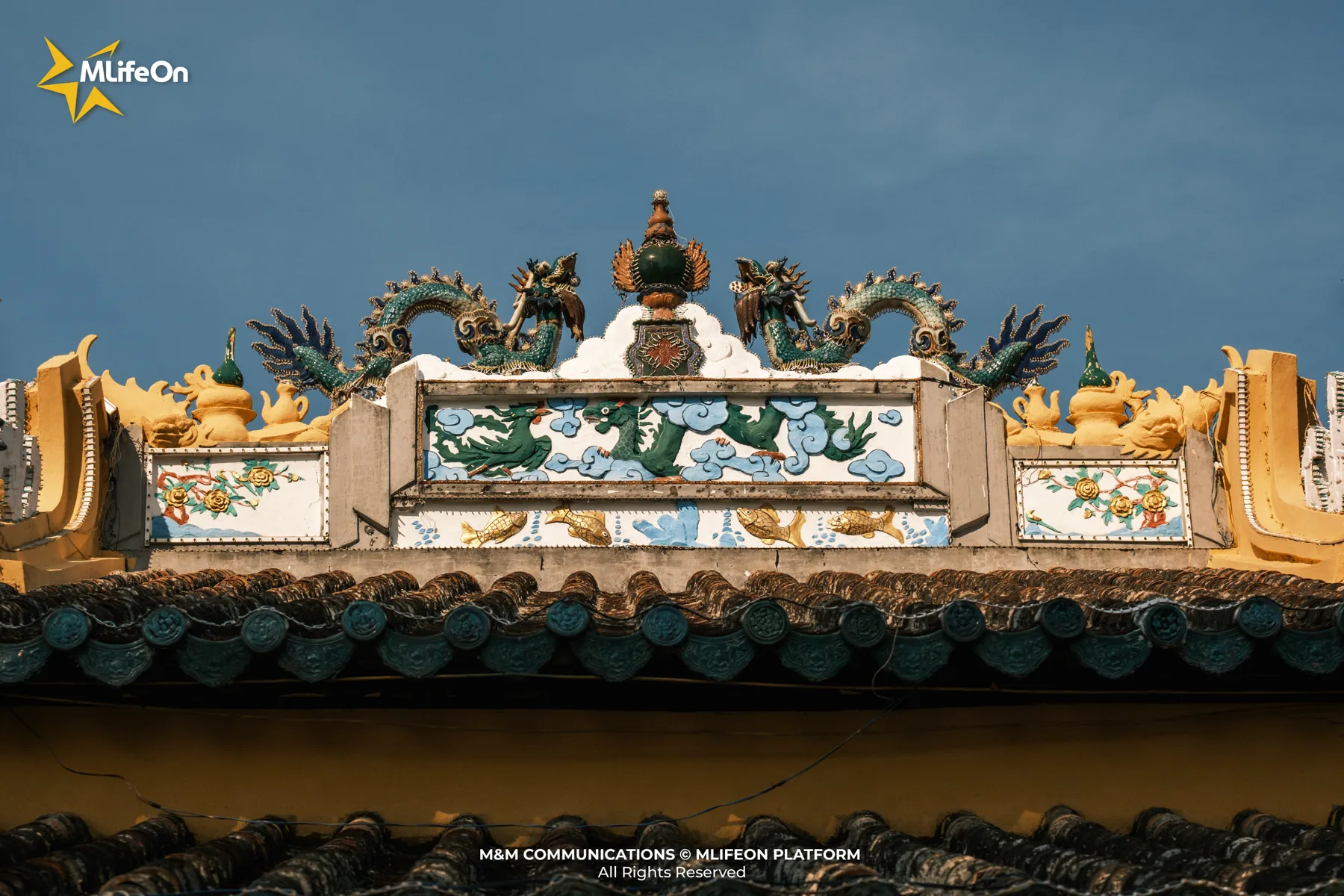
Image of "two dragons facing the moon" on the roof of Binh Thuy communal house in Can Tho
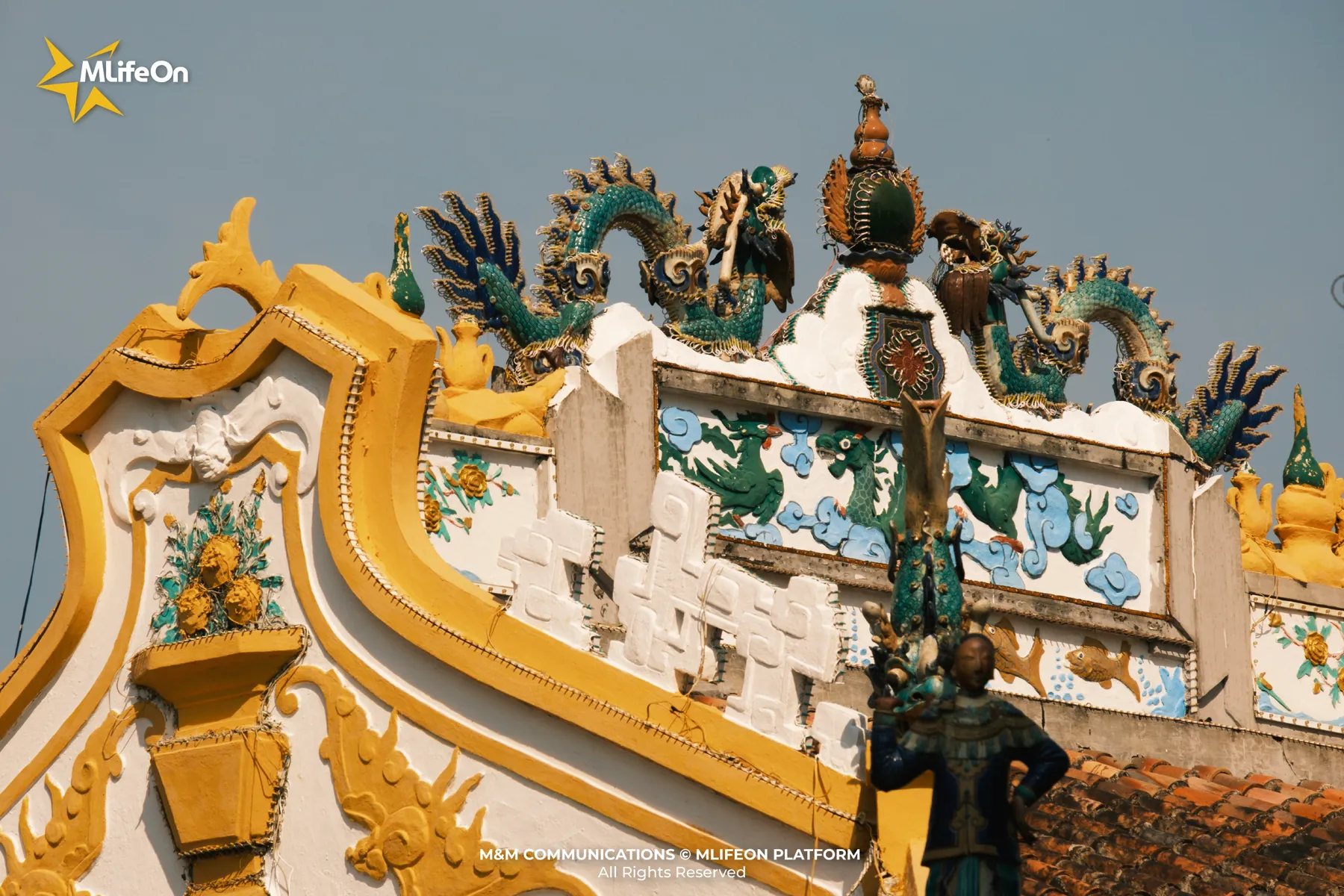
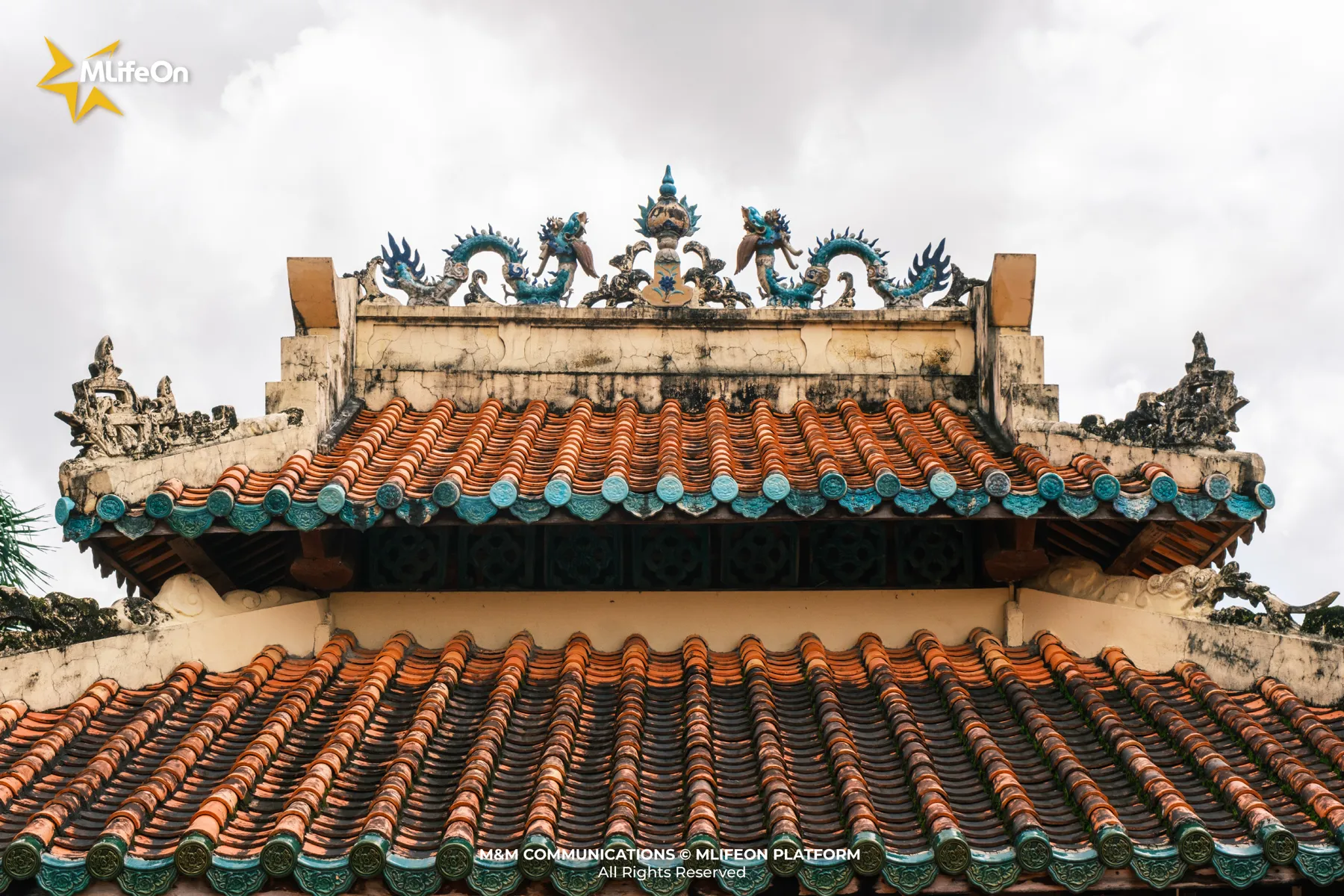
Image of "two dragons worshiping the moon" at Mac Cuu Temple - Ha Tien
This image is not only a decorative detail, but also a spiritual presence in village beliefs, where people pray for favorable weather, good crops, and national peace and prosperity.
Dragon symbol in the royal court: the drawing of authority and destiny
In royal art, the dragon is not only a mascot, but also a symbol of the emperor, the son of heaven - the one who rules the world on behalf of heaven. Therefore, the image of the dragon is strictly regulated: only the king is allowed to use the five-clawed dragon, associated with the dragon robe, jade seal, and throne.
In the Hue Citadel, traces of the dragon are clearly present: from the dragon screen in front of Thai Hoa Palace, to the steps at Ngo Mon, the dragon is always in the center, as if affirming the unique position of the emperor.
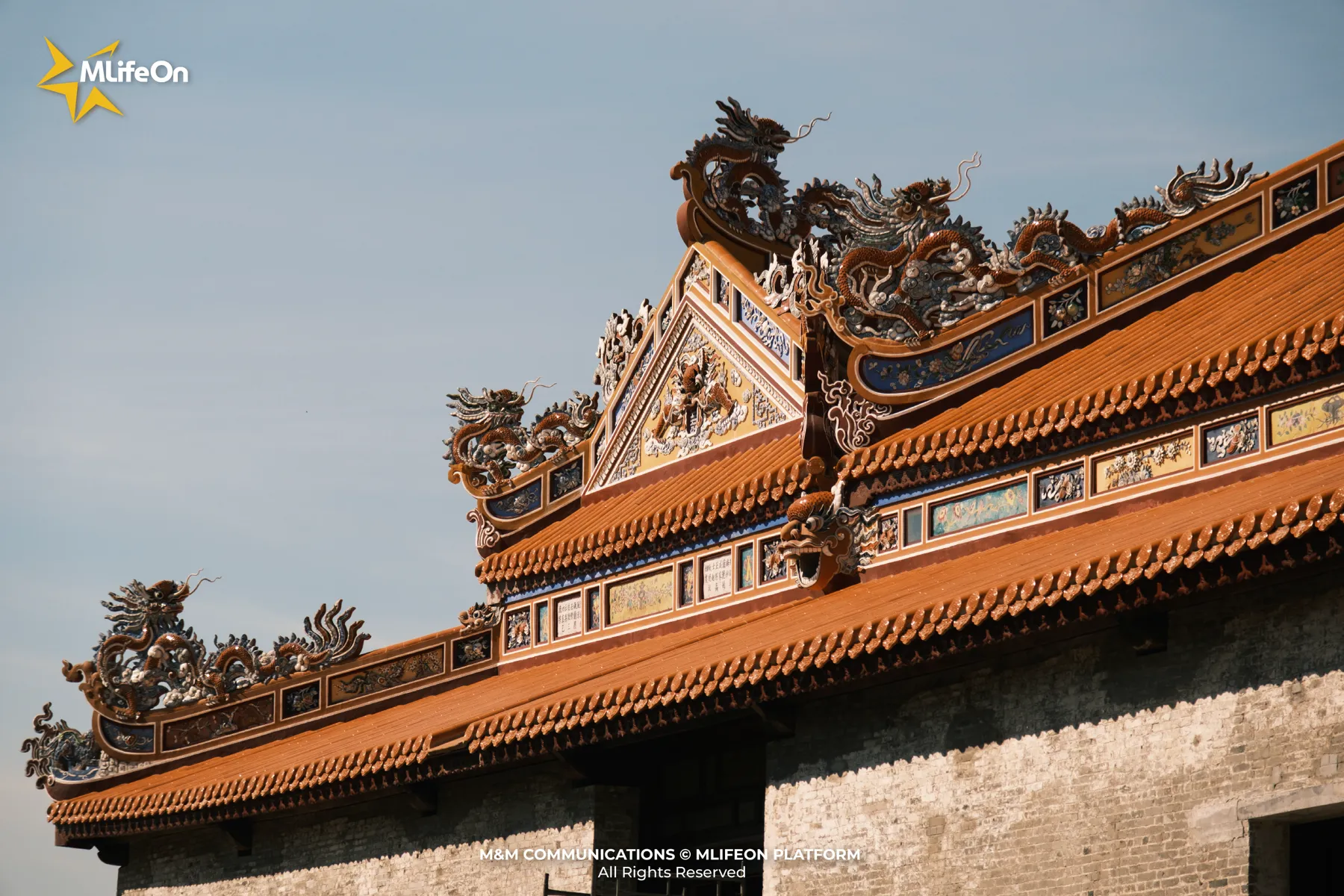
Dragon symbols appear frequently in Hue citadel
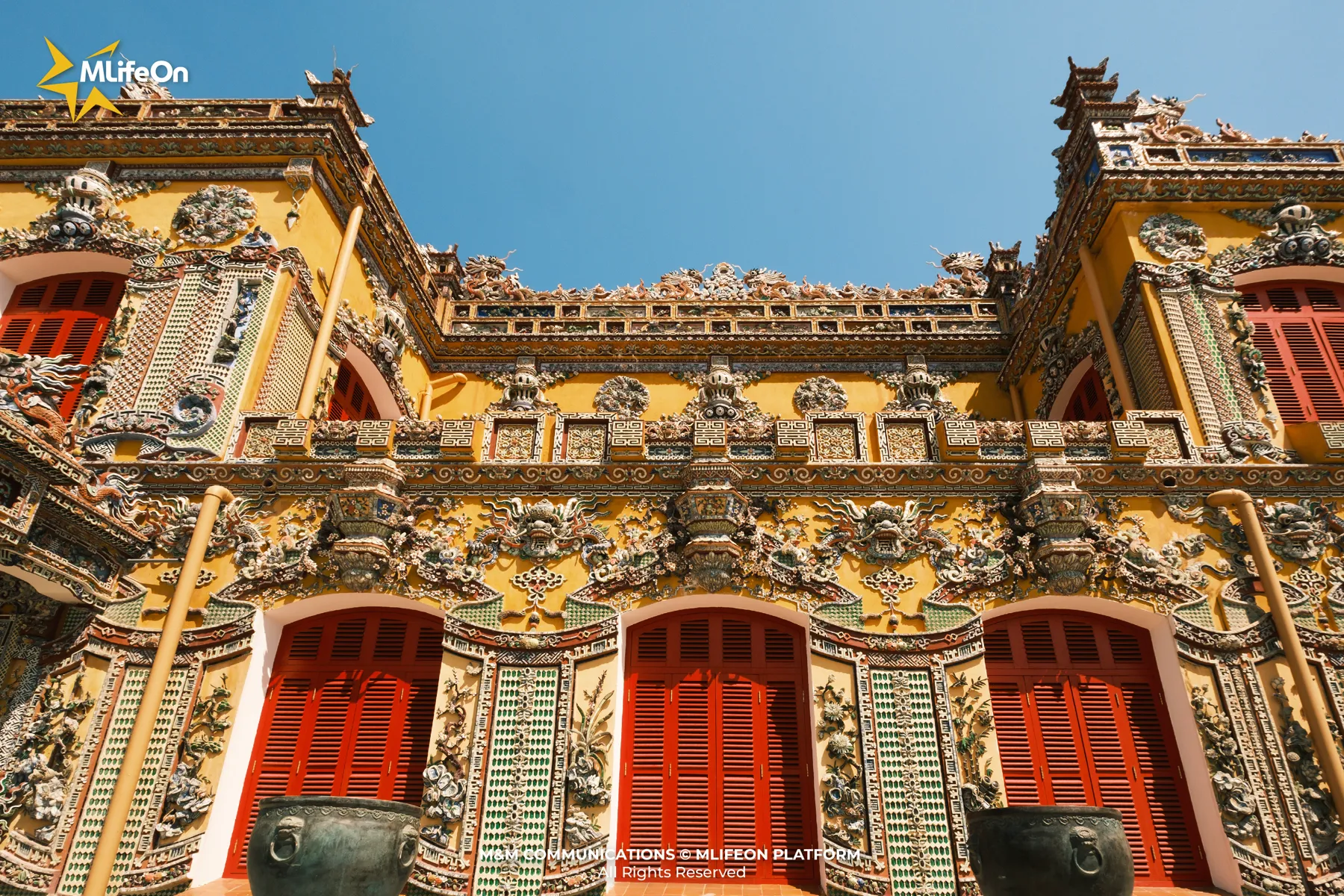
Dragon carved in Kien Trung Palace, Hue
The dragons of the Nguyen Dynasty had delicate, curvaceous bodies, heads held high, and round scales arranged evenly like clouds. Each carving on the Nine Tripod Cauldrons and each pattern on the dragon robe were a combination of skillful craftsmanship and the symbol of supreme power.
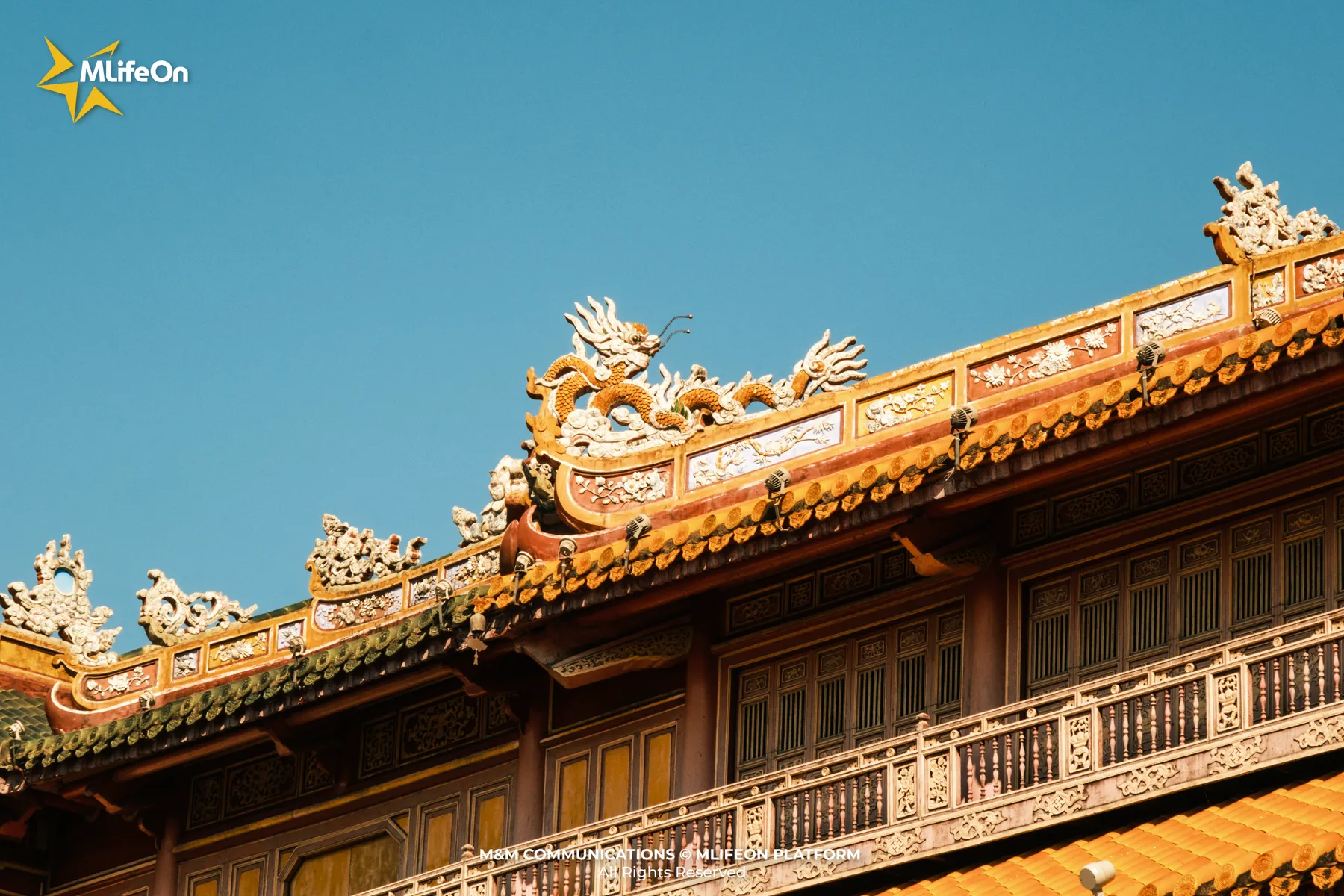
Nguyen Dynasty dragon has a characteristic appearance
Dragons in spiritual architecture: connecting the earthly world with the spiritual world
Outside the royal palace, dragons are still constantly present in the religious life of the Vietnamese people. From the three-door gates of pagodas to the roofs of communal houses - wherever there are spiritual traces, there is the image of a dragon.
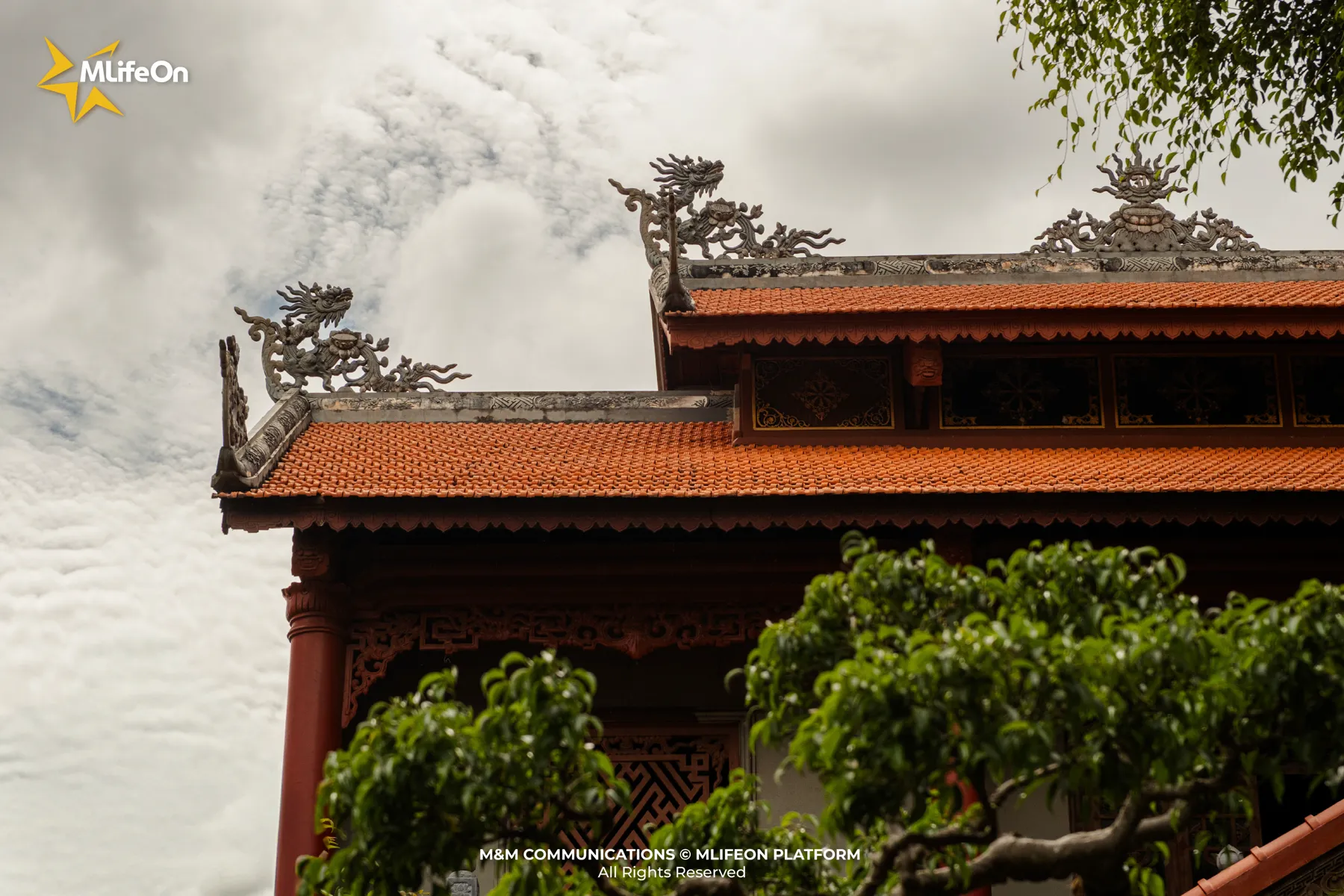
Dragon image appears on the roof of Sac Tu Khai Doan pagoda, Buon Ma Thuot, Dak Lak
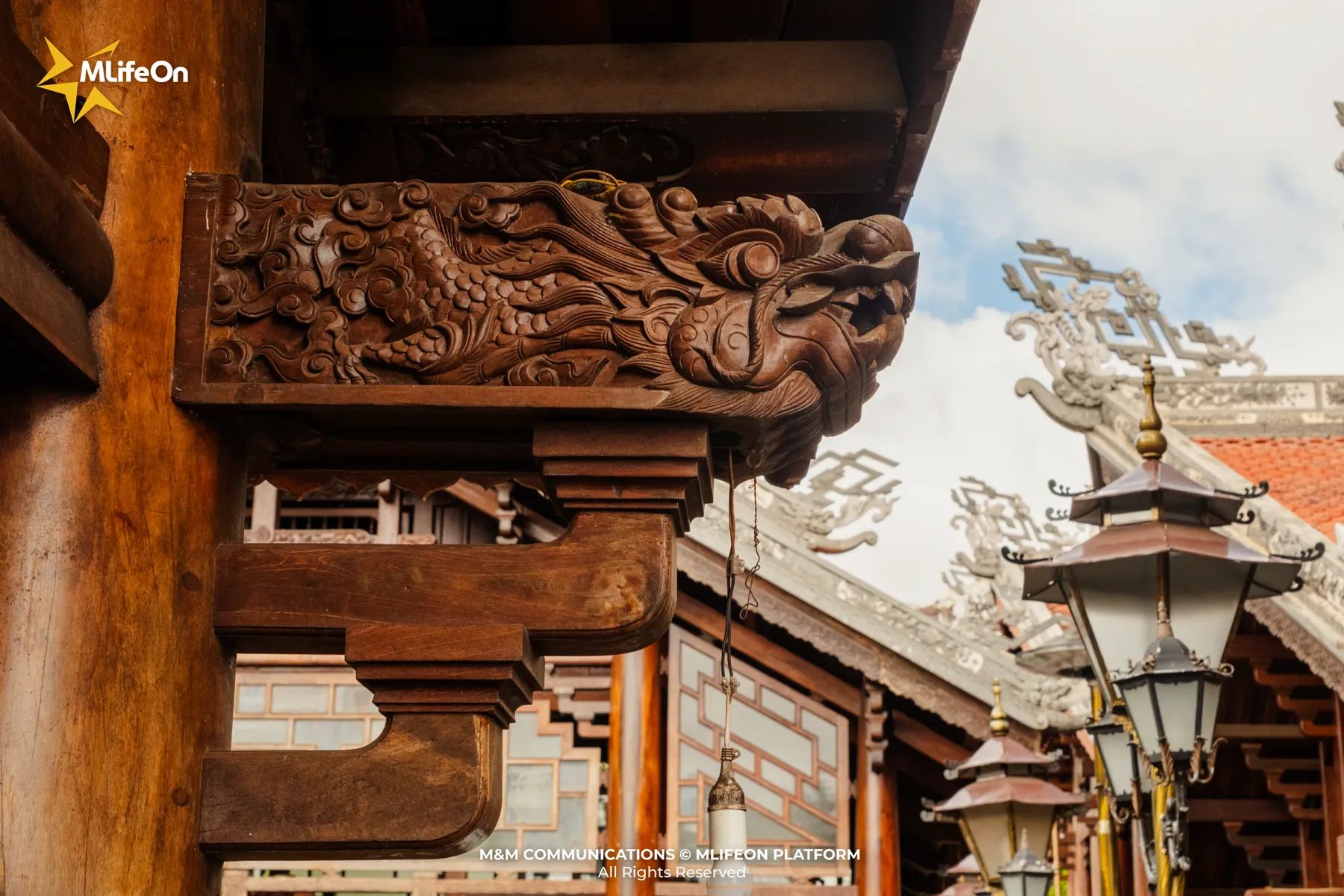
Dragons do not only lie quietly in bricks and stones, but also come alive in folk dragon dances – ritual performances during festivals and New Year. When dragons dance rhythmically to the sound of drums and gongs, it is the time when people welcome the gods, welcome blessings, and bring the spirit of solidarity and auspicious aspirations for a new year.
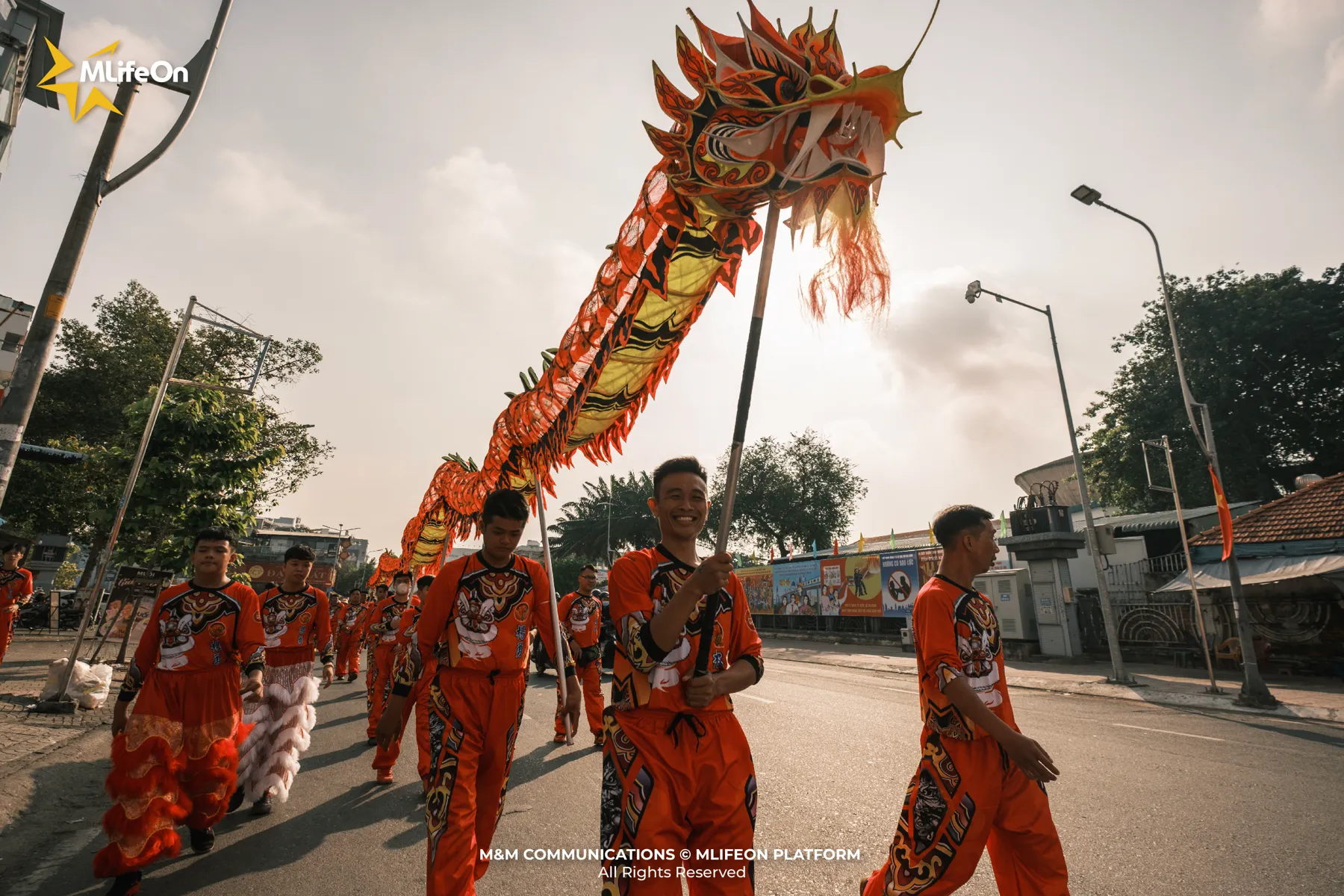
Dragon image in lion - unicorn - dragon dance
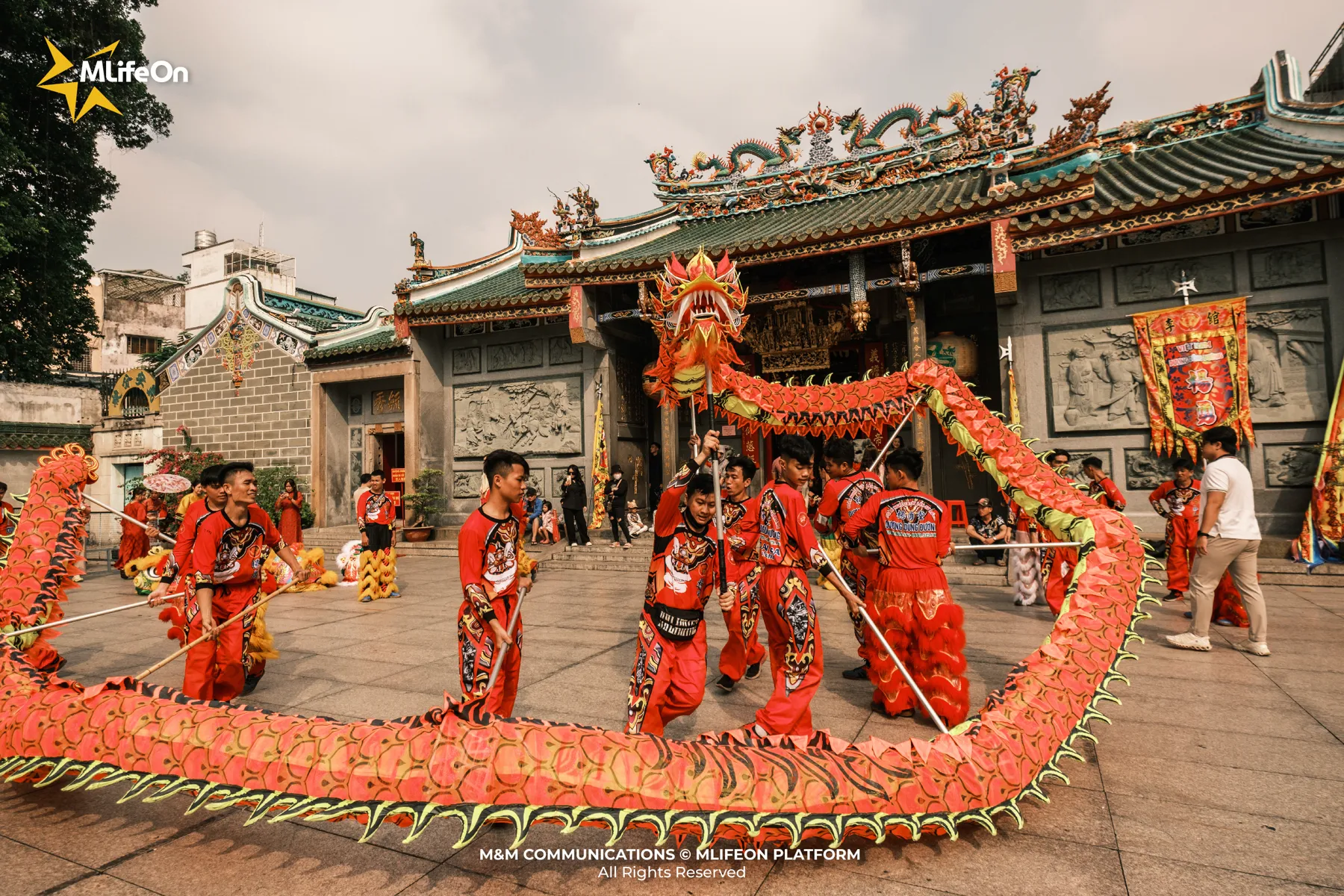
We also cannot help but mention the image of a carp transforming into a dragon - an ancient legend that is widely circulated and associated with educational values. It is a symbol of perseverance, overcoming difficulties to reach success. From Dong Ho folk paintings to village communal house murals, the carp overcoming the dragon gate is a reminder that every human being - no matter how small - if they make enough effort, can also transform into a dragon.
Conclusion
Perhaps no image is as deeply attached to the Vietnamese consciousness as the dragon. This sacred animal not only lives in the myth of the founding of the nation, but also resides in every communal house roof, tile, fold of clothing or traditional dance. From the sacred symbol in the royal court to the familiar breath in the village communal house, the dragon has been and is an inseparable part of Vietnamese culture.
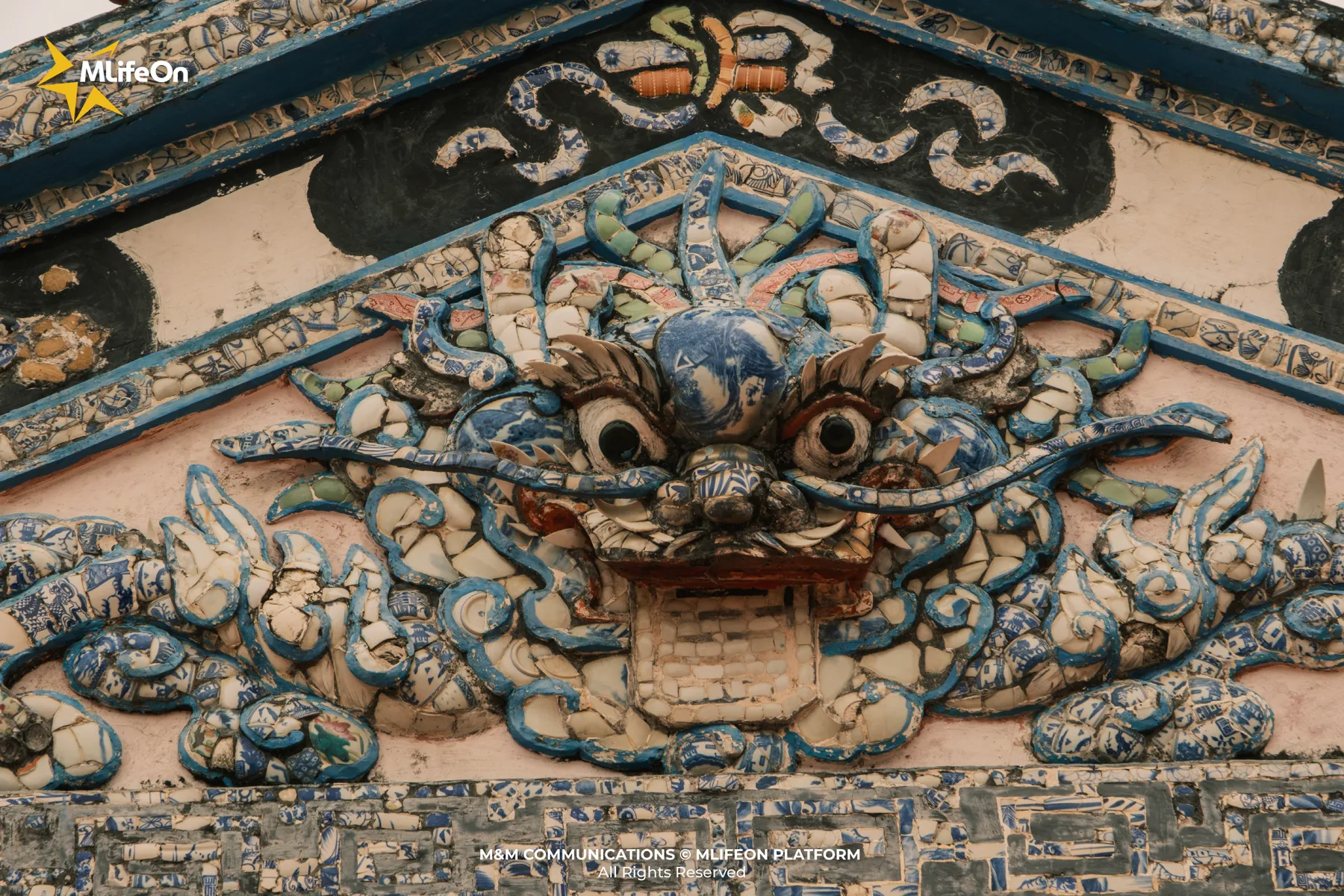
—---
CREDIT:
- Photography: Luan Nguyen
- Content: Giang Huynh
- Design: Phuong Nguyen





















